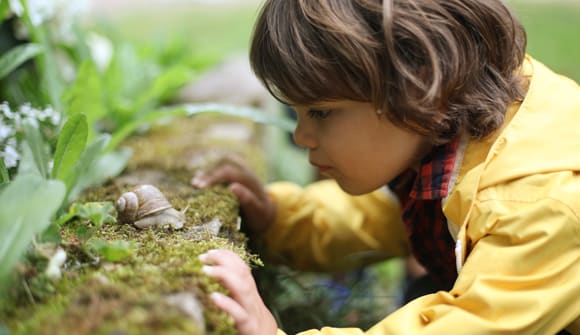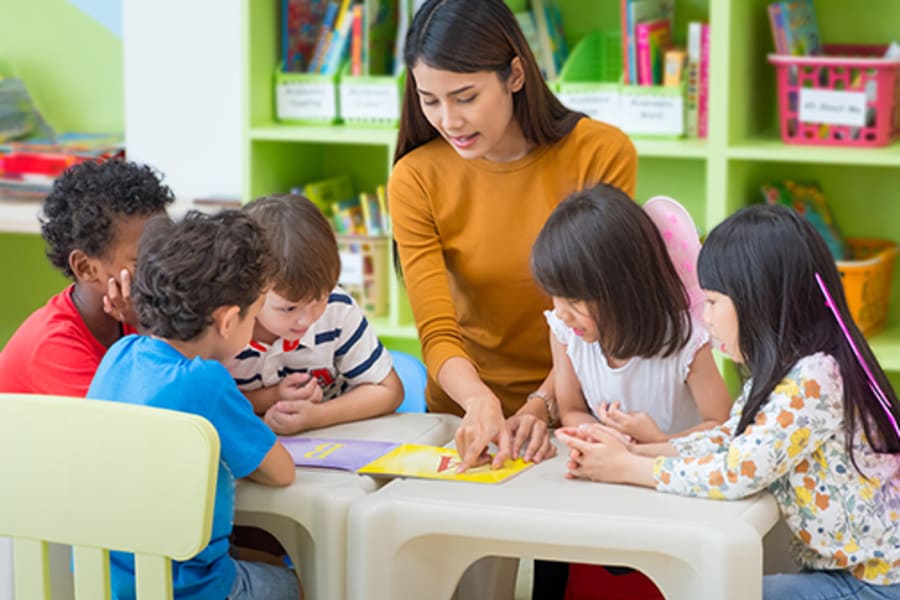Mini mindfulness
Reduce stress and improve sleep for your little ones.
Article Date:

Mindfulness is the practice of focusing on the present moment. It means being actively aware of what you are doing right now and not worrying about the past or future. Sounds like something better suited for yogis than young children, right?
Turns out, kids of all ages can benefit from mindfulness. When little ones focus their attention on the present moment, it helps them become fully absorbed in whatever they are doing: enjoying a cold popsicle on a hot day, watching a brilliant orange sunset, feeling the softness of their favorite blanket.
Sometimes, mindfulness is confused with meditation, but you don’t have to be in a meditative state or have a totally clear mind to be mindful. And practices don’t have to be long – even a minute or two can be beneficial. Techniques will vary based on your child’s age.
The best benefits
Practicing mindfulness may help kids:
- Focus better
- Spend less time worrying
- Lower stress levels
- Improve mood
- Increase self-confidence
- Reduce risk of depression
- Feel happier and enjoy life more
- Sleep better
“Generally, when kids are able to be mindful, they are more aware of how they are feeling. This helps them better recognize and regulate their emotions,” said Emily White, PhD, clinical health psychologist with Baptist Behavioral Health. “The present focus of mindfulness can help reduce stress, decrease worry, and even improve concentration. Some studies show that elementary school kids who practiced mindfulness had higher math grades.”
A recent study published in the Journal of Clinical Sleep Medicine found kids who practice mindfulness had improved sleep. Elementary school children who took mindfulness training two times a week for two years slept an average of 74 extra minutes a night, according to study results.
Teach them early
Parents may begin modeling mindfulness to children as young as infants. One way to do this is to hold your baby, look into his or her eyes and smile. Be sure to put down the smartphone, turn off the computer and shut off the television. Focus only on your baby.
Giving your child your full attention, doing one thing at a time rather than multitasking, and avoiding distractions are all good ways to model mindfulness. Kids learn best by seeing what their parents do. By around age 4 or 5, children can begin to practice mindfulness more independently.
Tips and techniques
Even young children can learn to focus on breathing as a way to stay in the present. Deep breathing exercises can literally slow a racing heart and help kids respond to stress in a healthier way.
To recenter children and bring them back to the present moment, try an exercise focused on the five senses. Children should take a deep breath and identify:
- 5 things they can see.
- 4 things they can touch.
- 3 things they can hear.
- 2 things they can smell.
- 1 thing they can taste.
Finally, the STOP skill can help calm children and allow them to respond to situations more mindfully. This skill requires them to:
- STOP what they are doing.
- TAKE a breath.
- OBSERVE what is happening (both internally and externally – “I’m feeling X because Y happened”).
- PROCEED with awareness.
Families can practice mindfulness together. One easy way is to have meals without distractions (like phones) at the table. Or, try going for a mindful walk together, where you focus on what you see around you, like the feeling of your legs and arms swinging with each step and the sensation of warm sunshine on your face or a cool breeze on your skin.
Does your child struggle with handling stress? Does he or she seem anxious or depressed? Wolfson Children’s Behavioral Health has a team of specialists that will work together to assess and treat your child. Additionally, Wolfson Children’s has tools to support children’s mental health and help kids and teens navigate challenges with confidence and care. To learn more, click here.



